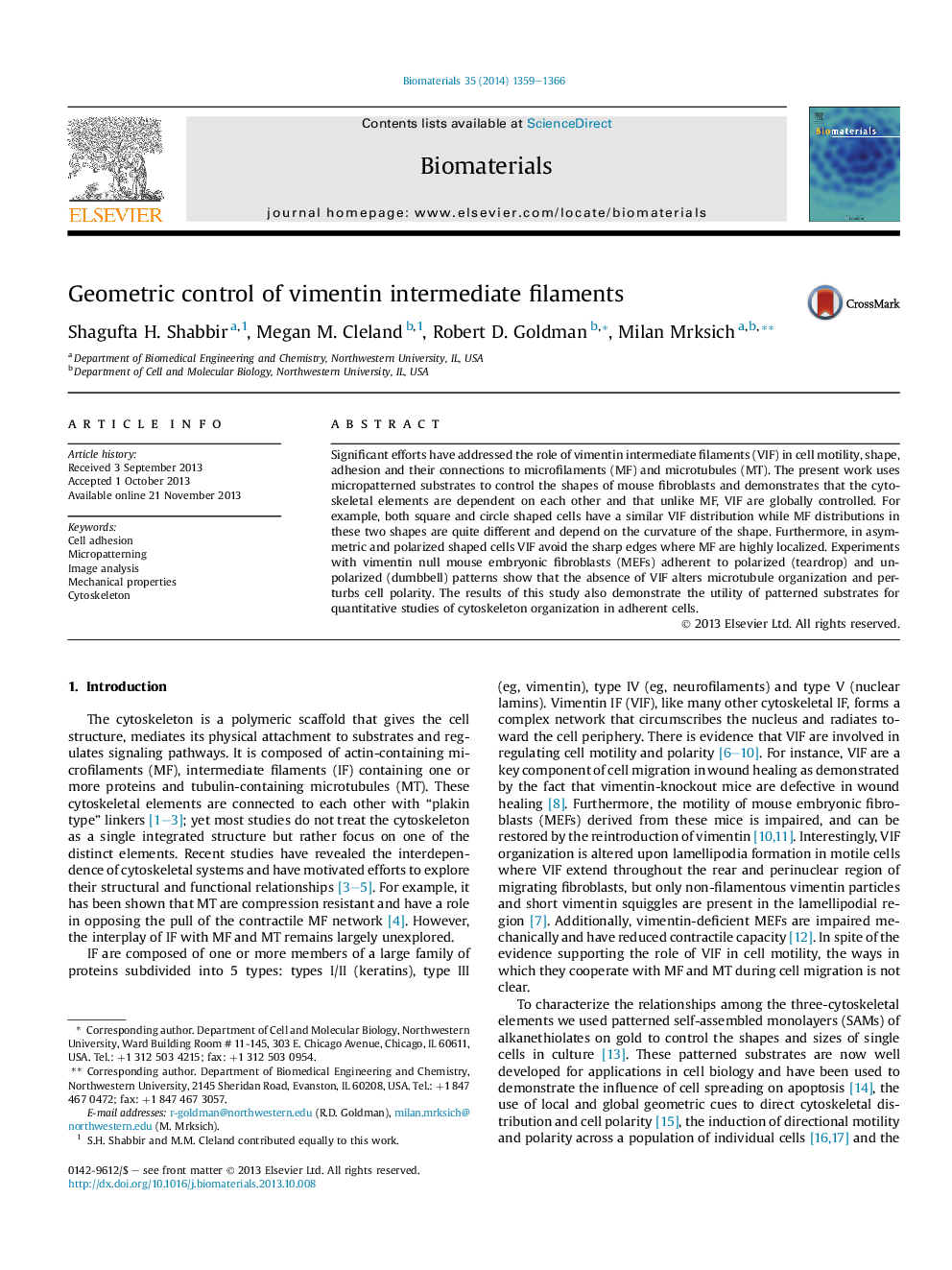| Article ID | Journal | Published Year | Pages | File Type |
|---|---|---|---|---|
| 10227413 | Biomaterials | 2014 | 8 Pages |
Abstract
Significant efforts have addressed the role of vimentin intermediate filaments (VIF) in cell motility, shape, adhesion and their connections to microfilaments (MF) and microtubules (MT). The present work uses micropatterned substrates to control the shapes of mouse fibroblasts and demonstrates that the cytoskeletal elements are dependent on each other and that unlike MF, VIF are globally controlled. For example, both square and circle shaped cells have a similar VIF distribution while MF distributions in these two shapes are quite different and depend on the curvature of the shape. Furthermore, in asymmetric and polarized shaped cells VIF avoid the sharp edges where MF are highly localized. Experiments with vimentin null mouse embryonic fibroblasts (MEFs) adherent to polarized (teardrop) and un-polarized (dumbbell) patterns show that the absence of VIF alters microtubule organization and perturbs cell polarity. The results of this study also demonstrate the utility of patterned substrates for quantitative studies of cytoskeleton organization in adherent cells.
Related Topics
Physical Sciences and Engineering
Chemical Engineering
Bioengineering
Authors
Shagufta H. Shabbir, Megan M. Cleland, Robert D. Goldman, Milan Mrksich,
